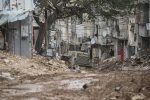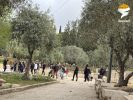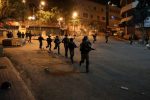GAZA, (PIC)
The demolition of the Grand Mosque in Khan Yunis, one of the oldest mosques in the Gaza Strip that was destroyed by the Israeli occupation army with premeditation, was nothing but a new witness to the fascist and racist structure of Israel based on the policy of historical and geographical substitution since before its inception when it falsely claimed that Palestine is a land without a people.
Since the Zionist gangs attacked Palestinian villages and towns 76 years ago, they have destroyed dozens of ancient mosques, many of which date back decades before the establishment of the occupying state, in the way of proving the Jewishness of Palestine.
In the ongoing war of extermination on the Gaza Strip since October 7, 2023, the occupation army has destroyed 565 mosques, including 243 mosques that were completely destroyed, three of which are ancient mosques that tell a history that witnessed civilizations and represented an important center for culture and trade during the Byzantine, Roman and Egyptian rule.
The Grand Mosque, which was built 98 years ago, is one of the most important landmarks of Khan Yunis in the southern Gaza Strip, whose stones and minaret have witnessed Palestinian history and political upheavals since 1928.
The mosque is located in the city center and has an area of about 3,300 square meters. It consists of a closed space called the mosque courtyard with an area of 900 square meters, and outside the mosque courtyard, some of which is covered with a roof and is located on both sides of the mosque’s courtyard.
Along the length of the mosque, each of these two spaces begins with an entrance to the mosque, one of which ends with the ablution area and the other ends with the mosque library, and each one has an area of about 500 square meters.
Historical references mention that the mosque was built when Barquq Castle was built during the reign of Prince Yunus bin Abdullah al-Nurzi al-Dawadar, at the request of Sultan Barquq, founder of the Circassian Mamluk state.
The castle was built in the form of a complete government complex, and it is a strong fort with high walls, and it included a mosque and a well, and an inn was built to receive travelers, and a stable for horses, and there are four towers on the castle walls for observation and protection.
During the era of the Ottoman Islamic rule, the vast land of the mosque was used as a warehouse for the army until the fall of the Caliphate in 1920, and eight years later the mosque was expanded.
Hajj Muhammad al-Agha (68 years old) says that the Grand Mosque has great symbolism of struggle, as most of the funerals of martyrs in the city of Khan Yunis came out of it throughout the long years of national struggle.
The Grand Mosque was also a scientific station for holding various seminars and lectures, according to al-Agha, noting that its destruction caused him great pain and suffering.
The Great Omari Mosque
As for the Great Omari Mosque, located in the heart of the old town in the Daraj neighborhood east of Gaza City, it is considered one of the most important and oldest historical mosques in Palestine, and was completely destroyed.
The mosque covers an area of 4,100 square meters and features a basilica-style architecture dating back to the 12th century AD. Some of the columns used in the construction were brought from the remains of demolished churches. It is famous for its strong structure, beautiful marble columns, and engravings and decorations dating back to the Mamluk and Ottoman eras.
Historical accounts indicate that the construction of the mosque went through 6 historical stages and had different uses throughout its history, which was reviewed in an archaeological guide issued by the Ministry of Tourism and Antiquities in Gaza City.
In the beginning, it was a pagan temple, then it was transformed into a Byzantine church, then it was transformed into a mosque during the reign of Caliph Omar bin Al-Khattab after the Islamic conquest and the name of the mosque was attributed to him, then parts of it were destroyed during the Crusades and it was transformed into a church again, and during the Mamluk era, Sultan Al-Zahir Baybars restored it to its original state, and it witnessed expansion operations during the reign of Sultan Nasser Al-Din Muhammad bin Qalawun, and during the Ottoman era it witnessed architectural additions, so the northern courtyard (iwans) was added, which forms the courtyard of the mosque with an area of 1,900 square meters.
Sayyid Hashim Mosque
Sayyid Hashim Mosque is the third historical mosque that was partially destroyed by the Israeli occupation army in its ongoing war on Gaza.
The mosque is located in the Al-Daraj neighborhood, with an area estimated at 2,400 square meters. It is considered one of the most beautiful and oldest mosques in Gaza. Sayyid Hashim Mosque includes a shrine under its dome, which is believed to be the grave of Hashim bin Abd Manaf, the great-grandfather of the Prophet Muhammad, peace be upon him.
The current mosque was built in the Ottoman era in the Mamluk architectural style. The horizontal section (plan) of the mosque reveals an open square-shaped courtyard in the middle, surrounded by three external prayer halls.
The main prayer hall in the mosque is almost square in shape and covered with intersecting vaults. The mosque contains a mihrab facing the qibla and a pulpit that was renovated in 1850 AD under the patronage of the Ottoman Sultan Abdul Majid.
Ibn Othman Mosque
As for Ibn Othman Mosque, located in the heart of the Shuja’iyya neighborhood in eastern Gaza, the largest and oldest neighborhood in the city, it is the second largest historical mosque in the Strip after the “Great” Omari Mosque.
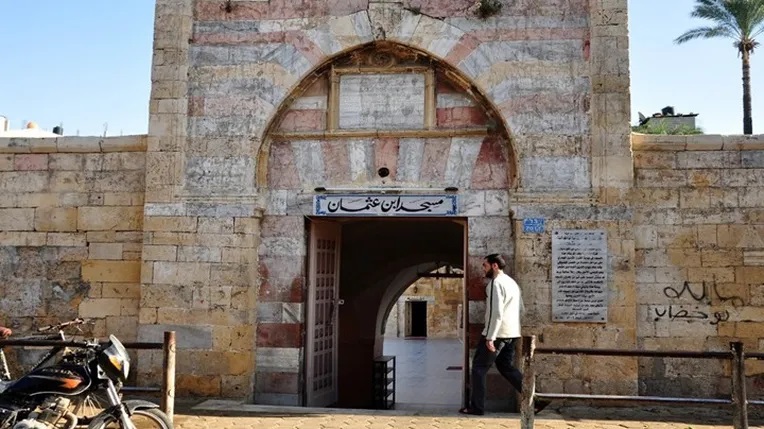
The residents of the Shuja’iyya neighborhood call this mosque “the Great Mosque” due to its large area and its location in the middle of the neighborhood’s main market, which has had a great impact on their lives throughout the ages since its establishment more than 600 years ago.
The mosque was subjected to attacks and demolition in previous wars, and was a center for confrontations with the occupation forces during the Stone Intifada that broke out on December 8, 1987.
The area of the mosque, which is of the Mamluk style, is 2,000 square meters, of which 400 square meters is the area of its main courtyard, and it has two strange gates, according to Nariman Khala, a researcher in history and antiquities.
She explains that the mosque was named after (Shihab al-Din bin Othman); one of the religious scholars in the city of Gaza, who originally came from the city of Nablus in the northern West Bank.
She points out that Ibn Othman built the mosque in Gaza in the style of another similar one that was built in the city of Hebron in the southern West Bank – to indicate the interconnectedness of the Palestinian cities with each other – which is considered the oldest mosque in the city of Hebron after the Ibrahimi Mosque there.
Al-Zafar Damri Mosque
The Israeli destruction also affected the Al-Zafar Damri Mosque, which was razed to the ground. Its construction dates back to the Mamluk era, when it was founded by the Mamluk prince, Shihab al-Din Ahmed bin Azfir al-Zafar Damri, in the eighth century AH, specifically in the year 762 AH.
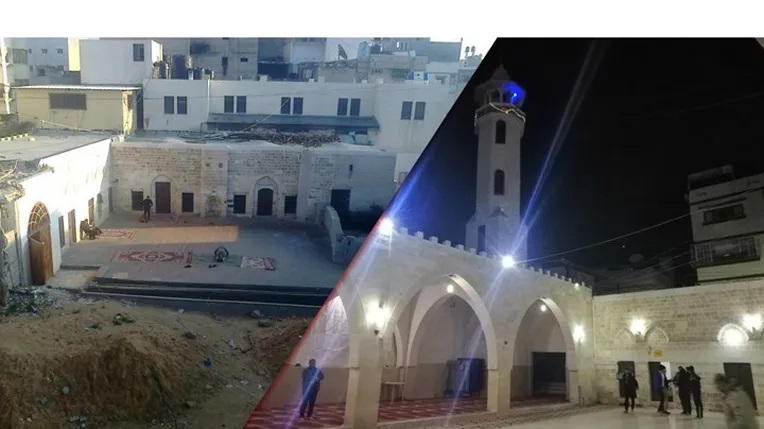
The mosque covers an area of 600 square meters, and is known as Al-Qazdamri among the general public. It contains the tomb of Shihab Al-Zafar Damri.
The ancient mosques are not the only ones that have been subjected to Israeli destruction, as the occupation army deliberately targeted the old neighborhoods, including the ancient buildings that represent evidence of ancient public life, such as markets, inns, public baths, corners, ancient cemeteries, and churches, all of which document part of the Islamic civilization, including the Ayyubid, Mamluk, and Ottoman civilizations that passed through the Gaza Strip.
Among those sites that were subjected to systematic destruction are the Church of Saint Porphyrius, the Samra Bath, the Monastery of Saint Hilarion, the Byzantine Church, the Pasha Palace Archaeological Museum, Dar Al-Saqa, the Kamaliya School, and the Shrine of Al-Khidr.
The destruction and crushing of the historical Palestinian identity constitute a clear Israeli violation of international legal texts, as Article 27, paragraph 4 (Annex IV) of the Hague Regulations of 1907 stipulates that forces in cases of siege must take all necessary measures to spare buildings designated for worship, arts, sciences, charitable works and historical monuments. Article 56 of the Hague Regulations of 1954 also prohibits the demolition of any stone or the destruction of facilities designated for worship, charity and historical buildings. The Additional Protocols to the Fourth Geneva Convention of 1977 included in Article 53 of Protocol I and Article 16 of Protocol II a prohibition against committing any hostile acts directed against historical monuments, works of art and places of worship that constitute the spiritual heritage of the people.






